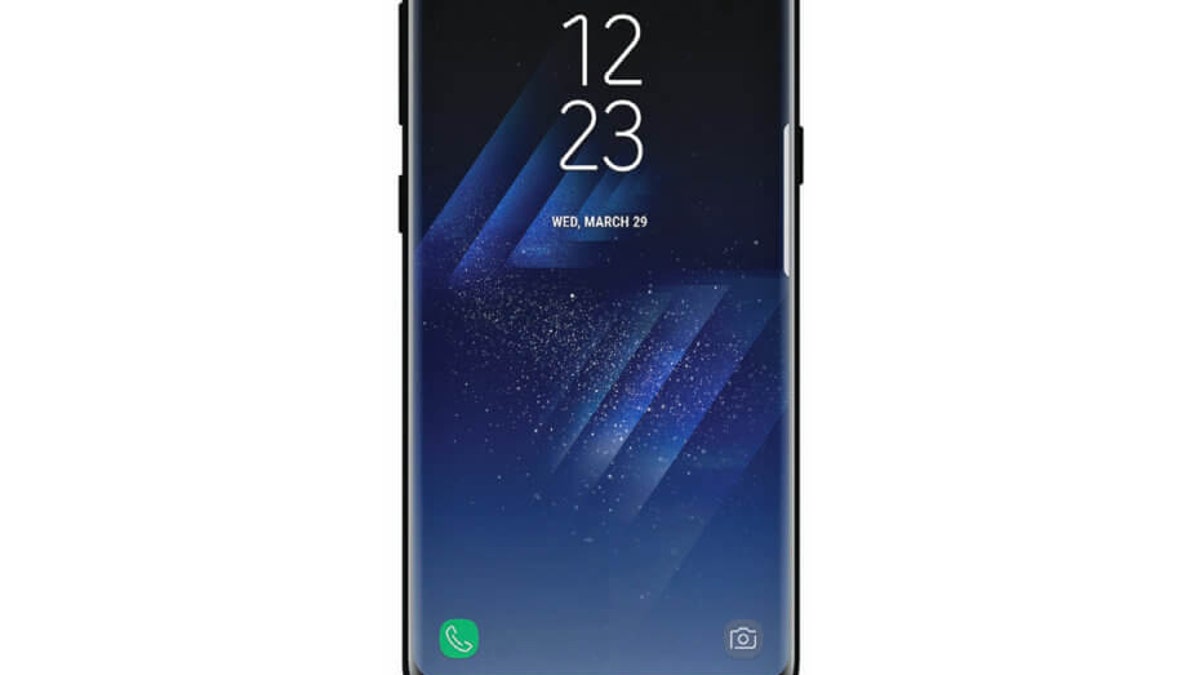
(Credit: Evan Blass)
Recent reports are giving us a possible picture of Samsung’s next-gen flagship phone and Apple’s future “iPhone 8.”
Because Samsung’s Galaxy S8 announcement is imminent, reports are now offering lots of details about the possible release date, specs, and price. The Galaxy S series is one of the best-selling phones in the world.
The S8 is slated to be announced March 29 -- which Samsung has confirmed -- at the Samsung Unpacked event in New York City. A new Gear VR headset compatible with the new phones is also slated to be rolled out.
MWC: NOKIA 3310 RETURNS, SAMSUNG TEASES GALAXY S8
One of the most reliable purveyors of Samsung rumors is Evan Blass, aka Evleaks, a mobile reporter at Venture Beat. The latest wrinkle he offers is that the global release of the two rumored models, the S8 and its larger sibling the S8+ (Plus), won’t happen until April 28, citing a person “briefed on the company’s revised target.” That’s a week later than the April 21 availability date originally cited by Blass.
"No particular reason was given for the updated schedule, although Samsung is known to be proceeding particularly cautiously with this launch, following a rushed Galaxy Note7 debut last year that ended in disaster,” Blass wrote this week.
As for details about the hardware, Blass has listed most of the marquee features of the S8 and S8+, according to his reports that cite sources familiar with the rollout.
GALAXY S8 VS. 'IPHONE 8': SAMSUNG GETS FIRST CRACK AT NEXT-GEN PHONE
Galaxy goes (really) big
The key takeaway is that these phones (or at least one model) will come with really big organic light-emitting diode (OLED) displays, even bigger than the ill-fated 5.7-inch Galaxy Note 7, one of the largest Samsung phones to date.
The Galaxy S8 will reportedly have a 5.8-inch display and the S8+ will sport a huge 6.2-inch display. The beauty of the design, however, is that the phones will not be wider (or not appreciably wider) than previous Galaxy series phones and have smaller display bezels (borders), according to reports.
IS PRESIDENT TRUMP RACIST? GOOGLE ASSISTANT HAS AN ANSWER FOR THAT
Also, Samsung, for the first time, may standardize on curved displays. To date, the mainstream Galaxy models (those without the “Edge” branding) have not had a curved display.
Other features to expect include 64GB of baseline storage -- up from 32GB on the Galaxy S7 -- with the option for an additional 256GB microSD card. Also: a USB-C port for charging (an industry standard that is compatible across many phone brands), a 3.5mm headphone jack (which Apple dropped on the iPhone 7), a 12-megapixel rear camera and front-facing 8-megapixel selfie camera.
Samsung is also rumored to jettison the physical home button in favor of software buttons. And the fingerprint sensor is reportedly on the back of the phone.
The price is expected to be higher than the Galaxy S7 and S7 Edge. Possibly $100 more, according to Blass.
OLED iPhone to be called “iPhone Edition”?
It shouldn’t come as a big shock that later this year Apple will follow suit with its first OLED iPhone -- often referred to as the “iPhone 8” or “iPhone X” in reports. Like the Galaxy S8, that may also ditch the physical home button -- a mainstay of the iPhone -- and use a software-based virtual button instead.
The key takeaway from iPhone 8 rumors is that, like the Galaxy S8, there will be more display, less bezel (the latter is largely non-functional areas above and below the display).
FOR THE LATEST TECH FEATURES FOLLOW FOX NEWS TECH ON FACEBOOK
The latest rumors from Japanese-language rumor site Mac Otakara claim the iPhone 8 could be called the iPhone Edition, like the high-end -- and very pricey -- Apple Watches. If accurate, which is a big “if” at this stage, the branding scheme hints at how expensive the phone would be. Some previous rumors claim the OLED iPhone would be around $1,000.
That same Mac Otakara report suggests that the so-called iPhone Edition may ship later than the two other models, the iPhone 7s and 7s Plus, which are slated for September.
Samsung and Apple did not respond to requests for comment on this story.
